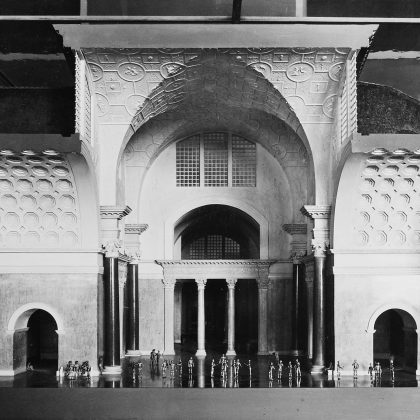Staging Rachel: Rabbinic Midrash, Theatrical Mime, and Christian Martyrdom in Late Antiquity
Until 24th August 2020 enjoy free access to the full article Staging Rachel: Rabbinic Midrash, Theatrical Mime, and Christian Martyrdom in Late Antiquity by Fotini Hadjittofi and Hagith Sivan, as published in Harvard Theological Review, Volume 113, Issue 3.
Lamentations Rabbah Proem 24, a late ancient midrashic narrative, unexpectedly elevates as the sole successful intermediary between Israel and God the complex figure of Genesis’ Rachel. What fascinated us initially about this extensive and intricate proem was precisely its astonishing dénouement. After a long list of extraordinary characters (Abraham, Moses, the Torah, and even the alphabet) try to placate God but fail, the text presents the biblical Rachel chiding God with an account of what was supposed to be “her” wedding night. Modeling compassion that God had failed to demonstrate in relation to Israel, Rachel recounts how she took pity upon her sister Leah, who was about to substitute her in the nuptial bed: she disclosed to her the secretive “signs” she had previously shared with Jacob, and then crawled under the nuptial bed to respond to Jacob whenever he spoke.
Rachel’s trick seemed comic and meant for the stage, but our survey of Greco-Roman comedy actually revealed that the closest parallels for the Rachel vignette were to be found not in comedy per se, but in mime and in literature that reflects the mime. A version of the mime that staged wifely adultery and had female actresses performing on a bed was popular throughout the Roman Empire. The author(s) of the midrash drew upon, but also subverted, the norms of staged adultery in order to make a profound theological point. It also became clear to us that this text set forth to recast the core of Christian martyrdom, itself a literary type influenced by theatrical traditions and conventions. The midrash questions the very meaning of martyrdom. How far does one have to go to reach the divine and to touch God’s own heart?
Without losing sight of the broader theological import of our text, we embarked on a close reading of the entire proem as a theatrical tour de force. By reading the intercession of the Patriarchs and Rachel in light of contemporary performance genres and visual media (such as Synagogue mosaics) we found that the midrash creatively communicated with its surrounding culture and especially with theatrical tropes, leading to a visualization of the proceedings as though performed on stage. A particularly comic scene is uncannily matched by a Christian text, the Apocryphal Acts of Andrew and Matthias. Rabbis, like Christian preachers, were always ready to castigate the theater and mimes in particular. Our article suggests that, just as martyrdom tales appropriated the power of theatrical performance, this late ancient midrash reformulated not only theatrical devices but also the dramatic narratology of Christian martyrdom itself.






